Dan Gottlieb, Director Analyst at Gartner, reports that 70% of Chief Sales Officers (CSOs) are currently investing or considering investments in the Sales Development function to generate pipeline.
For close to three-fourths of CSOs , improving pipeline creation is their top priority and most of them intend on leveraging Sales Development Representatives (SDRs) to achieve that goal. Currently, research shows less than 50% of Sales Development teams meet quota. By implementing four key drivers in their Salesforce environment, leaders can successfully improve Sales Development performance.
THE CHALLENGE
Only 48% of SDR teams hit quota
Sales Development Representatives (SDRs) are integral to the engine that drives revenue growth, as they're responsible for generating new leads and originating opportunities. However, according to TOPO's 2019 Sales Development Benchmark report, only 48% of SDR teams meet quota.
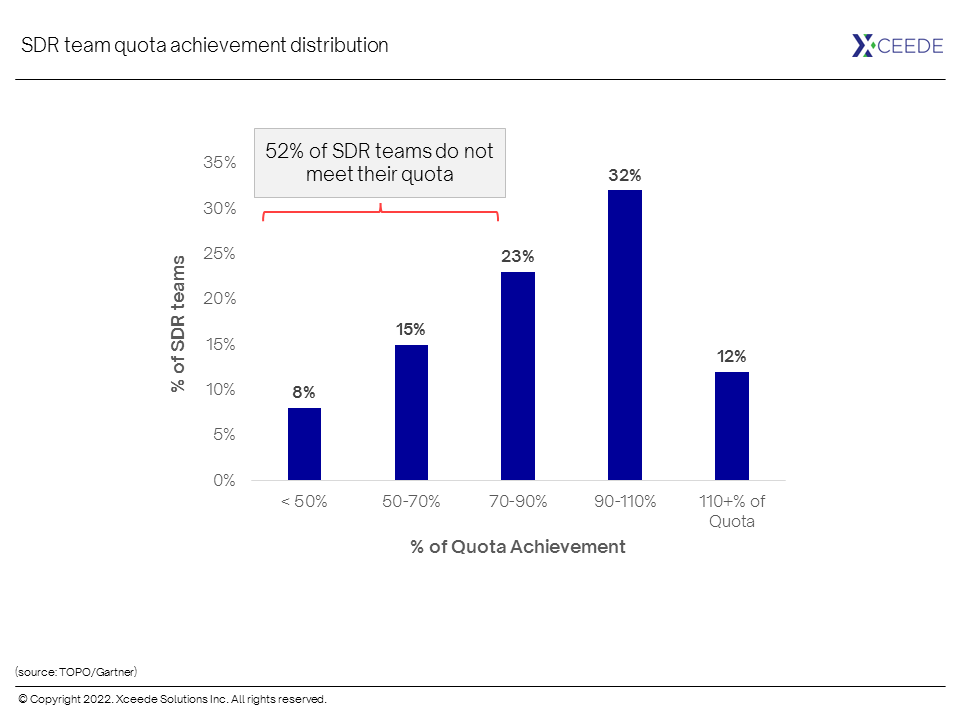
A number of factors, beyond the obvious unrealistic determination of quotas, may contribute to this problem:
- Inbound leads SDRs receive may not be qualified.
- It can be difficult to gauge how interested potential customers are, and whether or not they're even a good fit for the company's offerings.
- Competition is intense, and it can be hard to stand out from the rest.
- SDRs may not be given enough time to follow up with leads.
- SDRs may not be properly trained or supported.
- SDRs may be burning out from the high pressure and high volume of work.
Most of these factors can be attributed directly to the fact that the organization hasn't properly articulated their Sales Development function for success.
Gartner's research identifies three central issue areas that suggest obvious first steps in improving Sales Development performance.
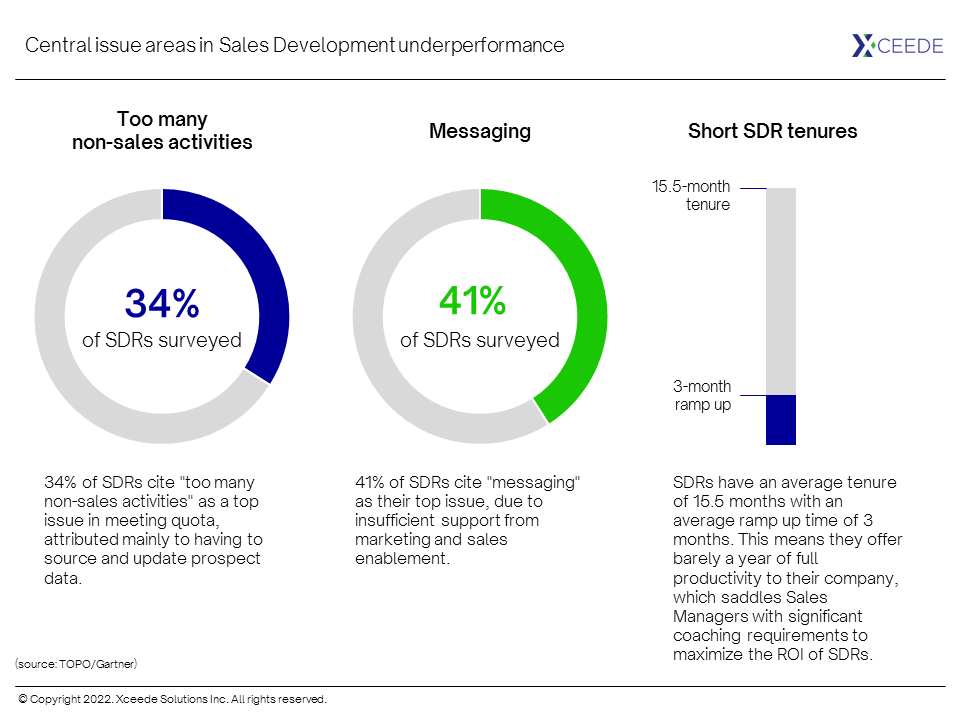
Our experience at Xceede, both internally and in our work with clients, confirms these findings. Prior to delegating and automating many of our processes, much of our internal sales development efforts went into prioritizing leads, CRM data entry and enrichment, sales content development, internal meetings, researching prospect accounts and contacts and generating proposals.
In our client work, we find SDRs (and salespeople in general) overwhelmed with administrative tasks that force them to frequently switch context, taxing their productivity. Most complaints we encounter associated to the implementation of new processes and technology stem from the fact that they add more non-sales obligations to the team's workload without contributing to their compensation.
THE CAUSE
An un-systematized Sales Development function
In his book The Machine: A Radical Approach to the Design of the Sales Function, Justin Roff-Marsh reveals a single assumption about the traditional design of the sales function at the root of this gap: sales should be the sole responsibility of autonomous agents.
It’s easy to validate this assumption. When companies hire salespeople, they let them know that they will be held accountable for outcomes, not activities. They pay the bulk of salespeople's income through commissions instead of fixed salaries. And they encourage salespeople, in general, to manage their territories, their accounts, and their sales opportunities as if they were their own as opposed to the companies'.
In its third State of Sales report, published in 2018, Salesforce reported that 57% of salespeople expected to miss their quota that year. In its latest State of Sales report, Salesforce identified that 77% of salespeople classified themselves as either moderate or underperformers in their level of confidence to close deals.
While other organizational functions are exploding in productivity, sales is sinking fast. What is causing the astonishing results of these other functions over the past decades?
The answer is the division of labor into specialized unit and the enablement of these units with technology.
Division of labor enabled manufacturing to transition from a cottage industry to the modern manufacturing plant. Division of labor has also had the same catalytic effect on project environments (think construction, aerospace, finance, and even marketing).
In contrast, the modern sales environment resembles is still close to a cottage industry in form and function, as if this business function were somewhat unfit for division of labor. We have seen tiny progress starting in the SaaS industry with the inclusion of BDRs in the sales team, but we're still long ways from the level of specialization needed to achieve the necessary output to keep up with the rest of the organization.
Key drivers for increasing Sales Development performance
The three data points mentioned above invite three potential initiatives to immediately improve Sales Development performance.
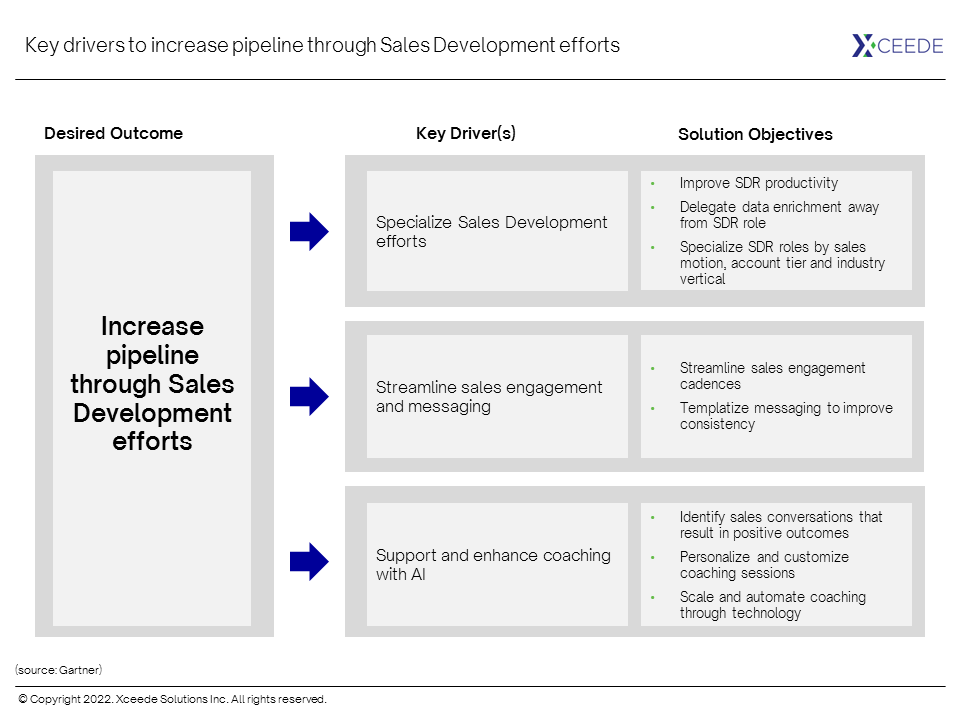
KEY DRIVER
Specialize Sales Development efforts
The goal through this initiative is to first remove time-consuming, non-sales activities from SDRs list of duties, and then to leverage division of labor to maximize the output of each individual team member by increasing focus and expertise.
CRM data enrichment delegation
Operating a CRM requires constant attention to data coverage. Every prospect record usually starts out with a basic but incomplete set of data. To fully meet messaging needs, as well as reporting and analytics needs, the organization must continuously identify and fill data gaps through data enrichment.
Some of it can be performed through integration with data enrichment platforms, but in some cases it's necessary to enrich data manually through research. As mentioned above, CRM data entry and enrichment wastes a lot of very valuable SDR time.
To increase SDR productivity, the organization must delegate these activities to specialized resources so that SDRs can concentrate on sales engagement activities. Whether data enrichment team members come from sales, operations or marketing, these additions are necessary to free up SDRs' attention and efforts to higher sales tasks.
Data enrichment needs have to be evaluated, data has to be sourced and then must be loaded into the CRM. Because prospect data fulfills needs across the organization, prospect data management is a function in and of itself that can and should command part of the organization's budget.
The simplest way to understand data enrichment is think of your Salesforce CRM. You can use it as a platform for both sales and marketing purposes. Most of the time, Salesforce is a repository of high-quality customer data on various objects like contacts, companies, and opportunities. These objects generally have a set of sub-fields. For example:
- Contacts: first name, last name, email address, job title
- Deals: deal size, deal owner, deal stage
- Companies: revenue, domain, account owner
At its essence, data enrichment consists in enhancing existing datasets and tools with 1st and 3rd-party data. (At Xceede Solutions, we use Uplead's native integration with Salesforce to enrich our data.) Its goal is to create a golden customer record that enables your business teams to access customer data in near real-time using whatever tools they rely on to perform their tasks.
Why does data enrichment matter?
Data enrichment enables a single unified view of the customer data set across the entire organization, allowing members of various teams to leverage it to drive business outcomes. The more you enrich your customer data, the more you add context to the information and the more opportunities for personalization you create.
It also helps to create deep-reaching analytics that would not otherwise be available with basic information. For example, you might create a dashboard that displays the total number of products ordered in the last 30 days, but if this information is not available at the individual level, how useful is it really? What happens if you want to answer the following questions:
- Who is the most active user in an account?
- What is her LinkedIn profile?
- Is she an active Twitter user?
- Which contacts have accessed the product guide page on our website?
- What is the revenue level of accounts who purchased X product?
To get answers to these questions, your business teams are forced to keep switching between different tools because the data warehouse, which houses your key business logic, is only accessible to the technical members of your analytics team who can write SQL.
Data enrichment makes it possible for the single source of truth that lives in your warehouse to be made readily available to every team in your company, giving them a comprehensive profile and historical record of every customer or user that’s touched your business.
Strategic approach and sales motion specialization
As is the case with specialized IT professionals who focus and develop expertise in certain technologies, organizations should focus their SDRs on specific industry segments, account tier (small, midsize, enterprise) or sales motion so they can develop deeper knowledge and expertise on their target market and messaging approach.
This specialized approach to SDR assignment allows for the design and development of distinct sales motions geared to maximize the effectiveness of the rep. Specialization according to sales motion could include:
- Inbound: SDR is tasked with responding to leads generated by marketing activities.
- Outbound market growth: SDR is responsible for outbound activities aimed at a list of segmented target accounts and responding to demands coming from those accounts.
- Outbound strategic: SDR partners with marketing and sales team members to orchestrate highly focused campaigns aimed at individual accounts.
SDRs who are focused on a single sales motion see a rise in their productivity due to context continuity and a consistency in their messaging and sales approach.
As a result of this approach, SDRs get to develop stronger intuitions and insights around market maturity, price points, length of sales cycle and overall purchase dynamics, eventually resulting in more productive prospecting efforts.
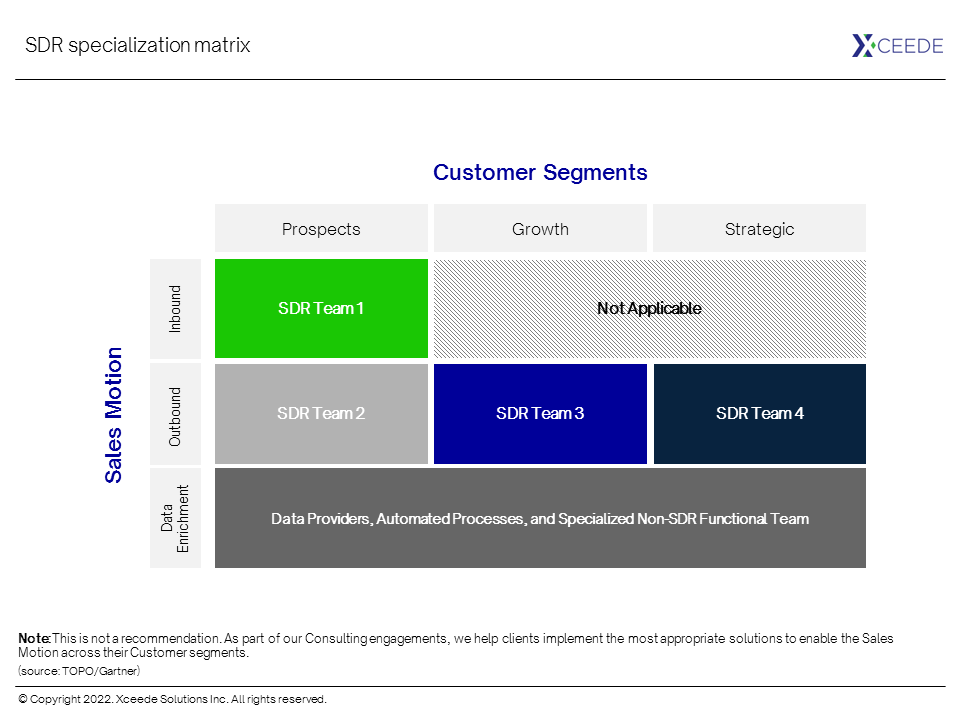
KEY DRIVER
Streamline sales engagement and messaging
The fastest way to speed up SDR time-to-productivity after hiring, and increasing SDR productivity overall, is to streamline the sales engagement process. Doing so allows Sales Managers to perfect the sales process in order to bring out the best in their reps and make every sales success easy to replicate. The result is winning, repeatable sales cycles.
The process helps SDRs execute a sales cadence, a series of messaging touches divided across different communication channels over a certain number of days. It eliminates discretionary decision-making at the execution level and allows SDRs to simply execute the touches without having to wonder what to do next or which message to send.
The process guides SDRs at every step of the cadence, from messaging to channel. Sophisticated sales organizations can design their cadence according to the source and the buying stage of the lead, and even adjust them dynamically depending on buyer sentiment, touch outcomes and conversion rates.
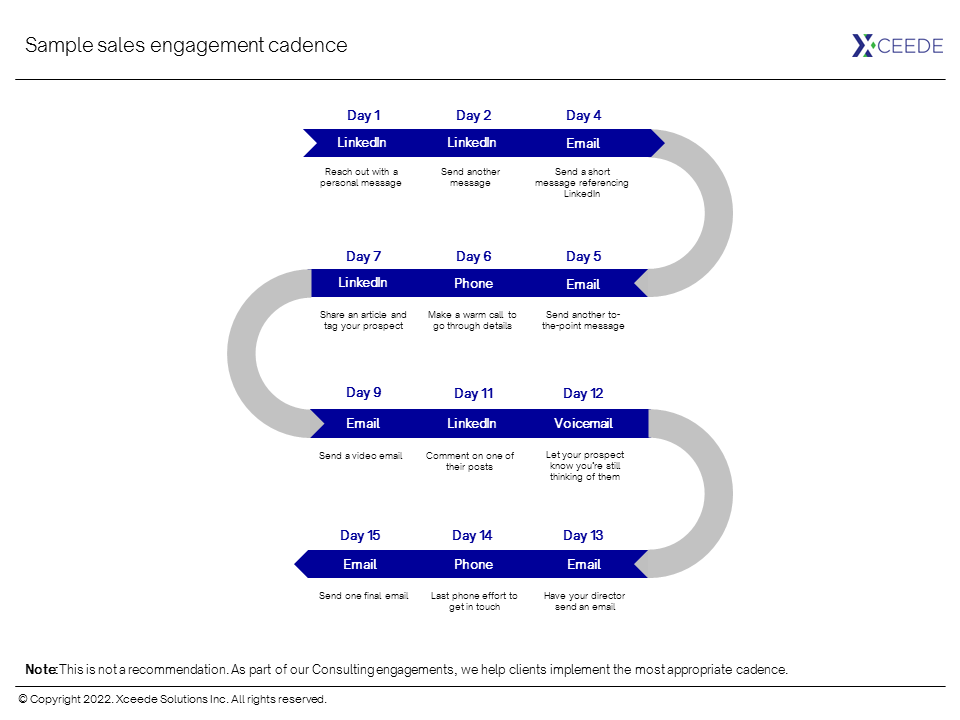
KEY DRIVER
Support and enhance coaching with AI
Coaching is a key driver of SDR performance. As mentioned above, SDR teams are heavily reliant on coaching to maximize their productivity and ROI. This, of course, places a significant time and effort burden on Sales Managers, who need to figure out how to best invest their coaching time.
Conversation intelligence technology and AI is able to pull trending topics and customer signals from every conversation SDR teams conduct. It can also capture keyword mentions, talk-listen ratios, speaker tracks, participants, and duration on every call records. With this data in hand, it becomes much easier to get the insights needed to build selling and sales enablement strategies.
Using conversation intelligence technology and AI, which matches conversations with outcomes and then determines which calls yield favorable outcomes and which don't, Sales Managers can rapidly increase their coaching impact. They're able to deliver customized coaching sessions to their team members based on what they've heard in the calls and what AI identifies as potential leverage points. They can also speed up onboarding, enablement, and continued success by sharing best-in-class conversations with their teams.
According to Gartner, a team of 50 SDRs coached by five managers multiplied by five their appointment booking rates after integrating conversation intelligence into their process, turning the SDR team into one of the organization’s highest leverage pipeline generation channels.
Xceede's approach to operationalizing Sales Development drivers with Salesforce
Set up individualized and specialized experiences
As mentioned above, division of labor and focusing team member efforts are the cornerstone of increasing SDR productivity. Salesforce allows the creation of as many user profiles as needed in the organization. With that in mind, create individualized profiles for each specialized function in your Sales Development workflow.
These specialized user profiles will allow them to access differentiated functionality and data to members of your team, in accordance with their responsibilities.
Salesforce Sales Cloud also allows the design of distinct work environments — called page layouts. You can assign specific page layouts to different user profiles as needed.
Design optimized page layouts that enable efficient work for each specialized role and function you have set up in your Sales Development team. This allows you to display all the fields a specialized role needs to do the job, while at the same time hiding all the fields that aren't needed. A well-configured page layout promotes focus and eliminates distractions.
You can also set up focused list views associated to specific user profiles that give SDRs quick access to useful links, such as websites, LinkedIn profiles and company news feeds.
Integrate Salesforce with data enrichment platforms
Most data enrichment platforms on the market, such as ZoomInfo, DiscoverOrg and Dun & Bradstreet (we use Uplead here at Xceede Solutions) integrate natively with Salesforce — you can even integrate with them at the API level for much more sophisticated integrations.
Your team members will be able to perform one-click data enrichment straight into your CRM, without them ever having to leave the platform, and instantly fetch company details such as revenue, employee count, industry. They will also be able to import decision maker names and contact information directly into the CRM without any need for manual data entry.
Set up omnichannel communication on Salesforce
Out of the box, Salesforce Sales Cloud can be integrated with your email system, be it Office 365 or Google Workspace. All prospect email communication will instantly be tracked within leads and prospect records.
However, since we can now communicate with customers across a great many different channels, you should connect Salesforce with as many communication channels and platforms that can be used to reach and be reached by customers. This includes:
- Telephony (make sure Salesforce is integrated with your company's physical or virtual PBX)
- Twitter (associate Twitter profiles to Leads, Accounts and Contacts and embed their feeds into the record)
- LinkedIn (integrate Sales Navigator with Salesforce and make sure profile URLs are readily available in individual records)
- SMS (connect Salesforce to an SMS-sending platform)
- Whatsapp (similar to SMS above)
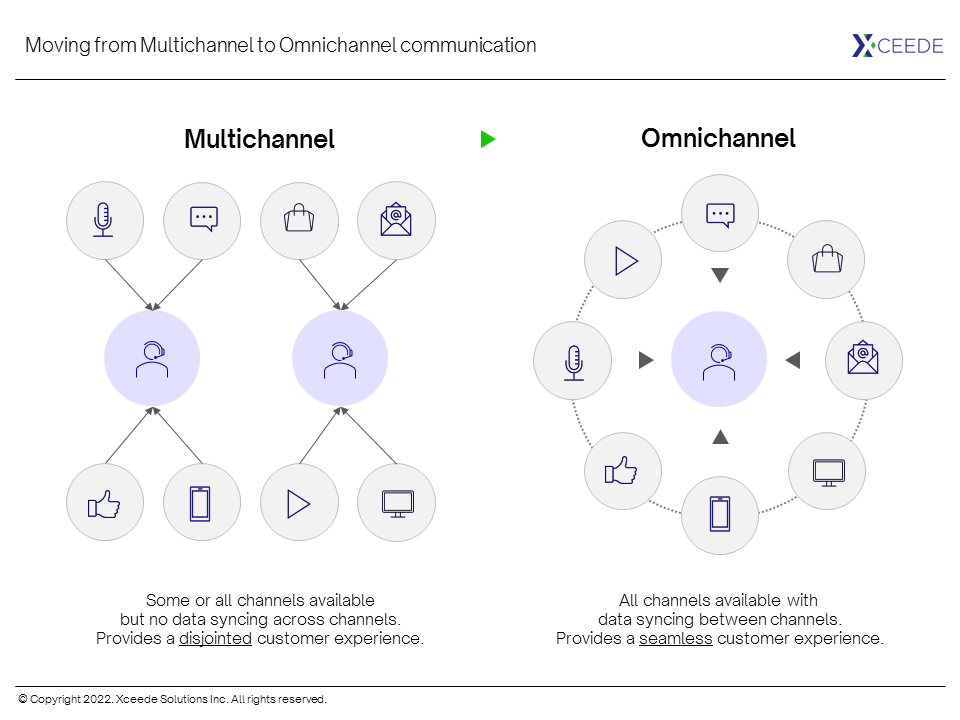
The more channels you connect to Salesforce, the less context-switching your team members will have to go through and the more you will be able to tap into analytics to identify patterns in communication channel preference.
While Salesforce Sales Cloud allows for a fair amount of channel integration, implementing tools such as Marketing Cloud or Pardot will extend the number of integrated channels your team can effectively communicate through.
Embed your sales engagement playbook in Salesforce
Using flows and additional fields, you can build and track custom and sophisticated touch patterns and sales cadences for your SDRs to follow. This streamlines your sales engagement process, standardizes the approach your reps take and eliminates confusion and decision-making at the execution level.
With on-screen flows, you can guide your SDRs every step of the way of a particular touch point. On-screen flows can point out to the rep which specific email template to use for a particular prospect, or display a specific phone script to be used to leave the prospect a voice mail.
Of course, flows can also automatically generate tasks depending on the particular conditions or stage of the prospecting journey, and also automatically move opportunity stages along as new data gets filled in your CRM.
You can also implement Sales Cloud's Sales Engagement's module. It will enable your team with a centralized engagement interface.
Here are some of the benefits it offers:
- Prioritized work queue so your SDRs don't have to wonder what they should do next;
- An integrated dialer so your SDRs can contact prospects by phone with native click-to-call technology;
- Embedded sales cadences that allow your team to scale best practices around the most efficient activities;
- Embedded guidance for success at every step of the engagement process;
- Integrated conversation insights that leverage Einstein's AI driven engine so your team can focus on customer topics that matter most;
- Lead scoring that helps you tap into your own sales history in order to convert leads faster.
Leverage Einstein to identify coaching opportunities
The telephony solution you choose to integrate with Salesforce should offer automated call transcript. By embedding transcripts into the Lead or Contact record, you make it possible to associate successful outcomes to specific touch points in the prospecting journey. Conversely, you also make it possible to identify and isolate sequences of unsuccessful outcomes.
You can train Einstein, Salesforce's AI engine, to identify communication patterns that lead to successful outcomes. Once Einstein has identified those patterns, it can quickly sort through unsuccessful outcomes and evaluate where the SDR's behavior deviates from successful patterns — and point those instances out to Sales Managers. They can then rapidly identify coaching opportunities that can yield the greatest results in the short term. Eventually, these coaching sessions can be automated and custom-offered to SDRs who display unsuccessful behavioral patterns.
